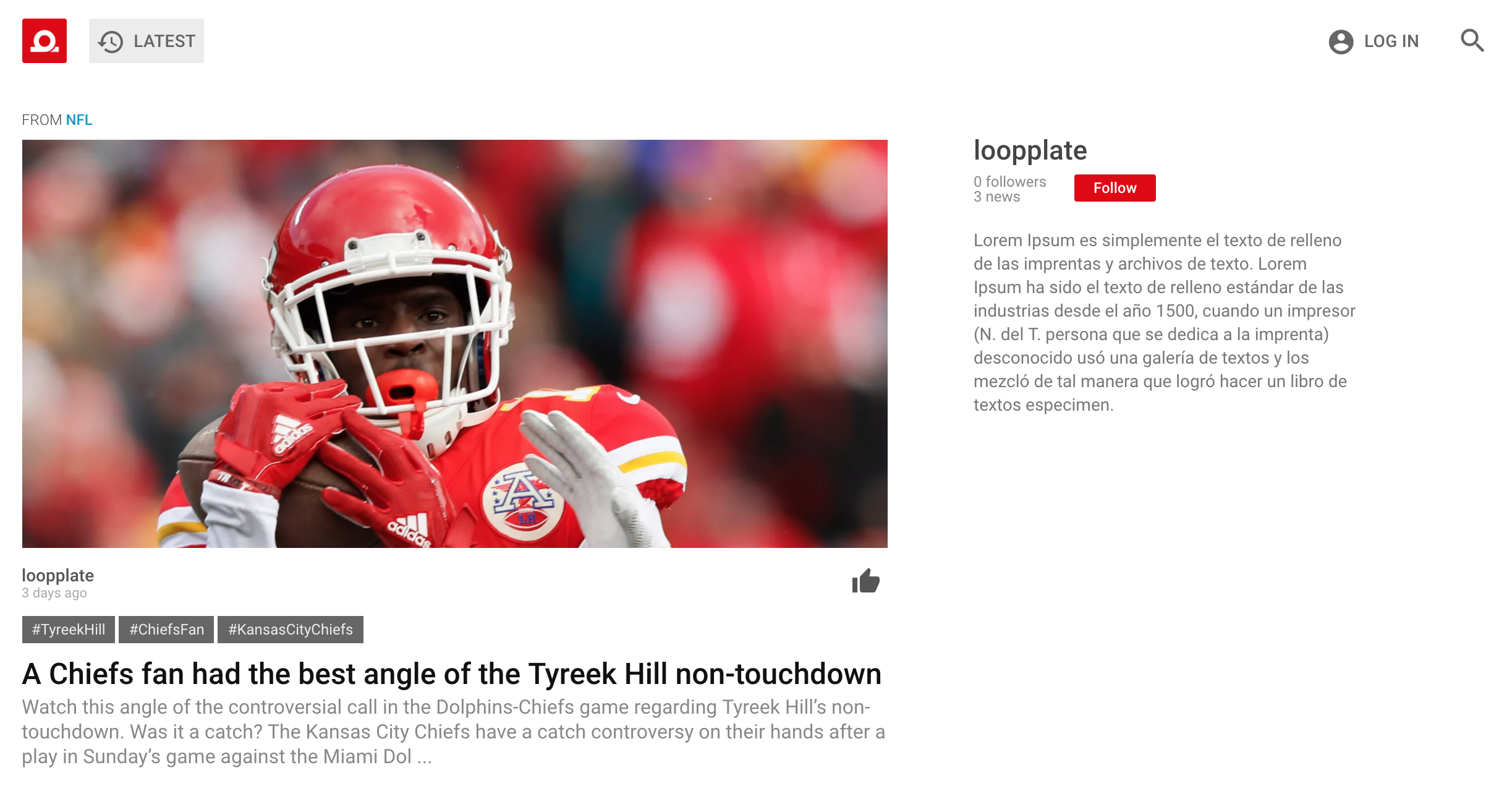https://github.com/ivanproskuryakov/loopplate
Loopplate - Production ready Node.js boilerplate. Loopback, Typescript, Angular.js
https://github.com/ivanproskuryakov/loopplate
express javascript-framework loopback node nodejs nodejs-framework typescript typescript-framework
Last synced: 3 months ago
JSON representation
Loopplate - Production ready Node.js boilerplate. Loopback, Typescript, Angular.js
- Host: GitHub
- URL: https://github.com/ivanproskuryakov/loopplate
- Owner: ivanproskuryakov
- Created: 2017-12-07T17:39:03.000Z (over 7 years ago)
- Default Branch: master
- Last Pushed: 2018-12-02T10:17:06.000Z (over 6 years ago)
- Last Synced: 2025-01-23T02:31:29.802Z (5 months ago)
- Topics: express, javascript-framework, loopback, node, nodejs, nodejs-framework, typescript, typescript-framework
- Language: HTML
- Homepage:
- Size: 2.56 MB
- Stars: 1
- Watchers: 3
- Forks: 0
- Open Issues: 0
-
Metadata Files:
- Readme: README.md
Awesome Lists containing this project
README
Quick start
------------
Build, launch server and watch for changes
```
gulp app:watch
```
Running tests
```
npm test
```

Dependencies
-------------
https://github.com/ivanproskuryakov/loopplate/wiki/Packages-&-dependencies
Detailed Description
-------------
NOTE: Boilerplate in active developing process. https://12factor.net/
### I. Codebase
Apps codebase contains both backend and frontend parts.
- Backend with its settings is located inside /app directory,
- /build directory is transpiled version of typescript running with node.js
- /data directory for backend assets, like the list of available countries used by the app.
- /public is where AnguarJS SPA located with needed assets and stylesheets.
### II. Dependencies
Backend dependencies controlled by NPM, bower used for the frontend, `package.json` and `bower.json`
are the corresponding files with all needed dependencies,
```npm install``` and ```bower install``` - common commands to install them.
### III. Config
Running environments: production, development and test.
A setting file for each environment located in app/server directory.
An official documentation technical aspects with needed details, see http://loopback.io/doc/en/lb3/Environment-specific-configuration.html
### IV. Backing services
MongoDb is a storage of choice, app can be converted to SQL based database since it's based on Looback's DAO.
For more info, see https://loopback.io/doc/en/lb3/Defining-data-sources.html.
Outbound emails are sent using mailgun that connected as a datasource and listed in datasources.json file.
Logs and errors are sent to sentry.io saas storage.
### V. Build, release, run
Builds done with https://github.com/shipitjs/shipit - it is simple, does the jobs and written on js.
Commands ```shipit production deploy``` and ```shipit staging deploy``` deploy production and staging accordingly.
On deployment git repo, and runs the commands in the following steps:
1. `npm install` - installs backend node dependencies on remote server.
2. `npm rebuild node-sass` - rebuilding `node-sass` vendor otherwise node-sass is broken and can't be used.
3. `bower install --allow-root` - frontend dependencies using bower.
4. `gulp app:build`- the actual build of the app, once the required vendors are in place.
5. `pm2 delete all` - kills/removes the actual node app and workers from the list, no mater if there any or not.
6. `pm2 start pm2.json` - start the app and workers based on settings from pm2.json file.
7. `node build/command/sitemap.js` - generates sitemap.xml file.
8. Update slack on successful deployment.
### VI. Processes
Commands needed both for dev and deployment made with gulp, see `gulpfile.js`.
- `gulp app:build` - build the app.
- `gulp app:watch` - watch for changes both in frontend and backend codebase, compile, run "server:watch".
- `gulp server:watch` - launch server.js in background and restarts if changes were done in "/build" directory.
Frontend:
- `gulp frontend:sass` - compile sass.
- `gulp frontend:sass` - compile sass + watch for changes.
- `gulp frontend:loopback` - generate Angular $resource services based on backend code, see https://github.com/strongloop/loopback-sdk-angular.
- `gulp frontend:rjs` - compiles javascript into a single file using RequireJS.
- `gulp frontend:templatecache` - concatenate and register AngularJS templates in the $templateCache.
- `gulp frontend:clean` - concatenate and register AngularJS templates in the $templateCache.
Backend:
- `gulp backend:symlink` - symlink /node_modules/app with /node_modules, needed for absolute paths.
- `gulp backend:build` - clean and rebuild.
- `gulp backend:watch` - watch for changes and recompile.
DB:
- `mongodump_mongorestore.sh` - shell script to restore db from remote production to local development environment.
### VII. Port binding
- Development: 8080
- Production: 80
### VIII. Concurrency
Due the nature of Node event-loop repeatedly takes a one single event at the time, no JavaScript code is executed in parallel.
Parallelism can be achieved by starting several workers(server/server.js), see http://pm2.keymetrics.io/docs/usage/cluster-mode/
### IX. Disposability
`shipit production pm2-start` & `shipit production pm2-stop`
http://pm2.keymetrics.io/docs/usage/signals-clean-restart/
### X. Dev/prod parity
Manifest recommends have identical production, development and environments.
Backup production database to your local frequently manually or with `mongodump_mongorestore.sh`,
### XI. Logs
On production logs go to sentry.io, development sends logs to console, test environment do not output any logs(mock).
`winston` npm library is used for logs transportation, https://github.com/winstonjs/winston
### XII. Admin processes
- `node build/command/sitemap.js` - generate sitemap.xml file.
- `node build/command/sendSummary.js` - send summary email with a list of new users.
- `node build/db/updateDataSources.js` - migration command to detect difference between DB and schema, alter DB schema to match schema.
- `node build/db/cleanup.js` - truncate database and populate demo data.